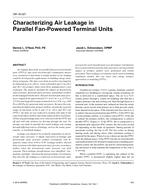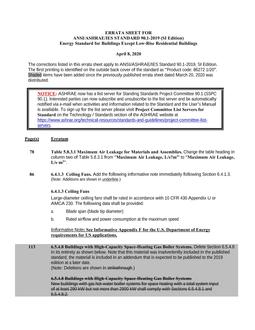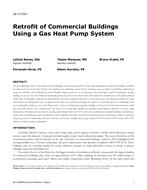Focuses on the influence of various climatic variables on the mass flow in district heating systems. The aim is to establish an equation of what is called the equivalent outdoor temperature. Two possible ways of doing this are considered. In both cases, dynamic models are needed of the mass flow with climatic variables as external inputs. The resulting equation for the equivalent outdoor temperature, which may be nonlinear, shows the equivalent value of each climatic variable in degrees Celsius. Thus, the equivalent temperature can be considered a variable that contains the effect of various weather factors on the mass flow. Measurements from the daily operation of a heating company in Iceland are used in a case study. It is also shown how the uncertainty in the parameters of the equivalent temperature equation can be estimated. The results indicate that, based on the present data, a linear relation between the outdoor temperature, the wind speed, and the number of sunshine hours is adequate for describing the equivalent outdoor temperature.
KEYWORDS: year 1995, outdoor temperature, district heating, heat load, measuring, case studies, Iceland, calculating, wind speed, solar radiation, weather, climate
Citation: ASHRAE Trans. 1995, Vol.101, Part 1, Paper number 3867, 394-399, 5 figs., 1 tab., 4 refs.
Product Details
- Published:
- 1995
- File Size:
- 1 file , 670 KB
- Product Code(s):
- D-16741


